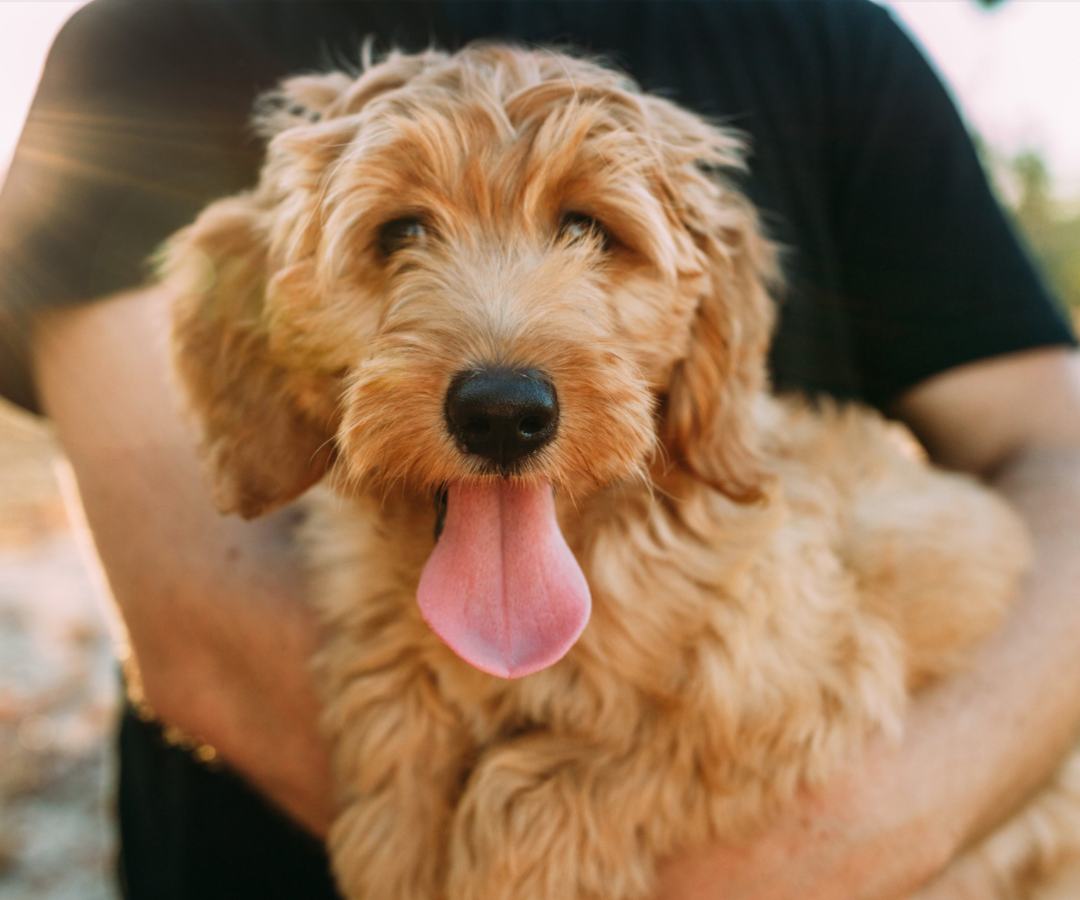
[Episode 21]
Why is my 5-month-old puppy fearful?
A friend of mine got a Doodle puppy and she joined the local Doodle Facebook Group. She shared a post that someone put up in the group to get my feedback. There was so much good information to share and a lot of misinformation, so I decided to tell you about it too. Here’s what the post said:
Hi all,
This is my puppy Coco, he will be 5 months old on Sunday. Since I got him at 9 weeks, he hasn’t interacted with too many dogs/puppies. I didn’t think this would be a problem but he is not terrified of all other dogs. When we go on a walk/anywhere, he will hide between my feet and stop walking the minute he sees one in sight. His trainer is telling me to find a timid puppy that he can be comfortable with but hasn’t offered much other advice/help.
I would appreciate all and any advice as I don’t want him to be so fearful. Also would love it if any of you has a pup and would be willing to help socialize Coco.
One of the biggest mistakes dog owners make is to think that getting a puppy means that they won’t have any behavioral issues, but that’s kind of like saying, if I buy a new car, then I won’t ever have any mechanical issues.
Getting a new puppy or getting a new car doesn’t mean you won’t have any problems. The real problem puppy owners face is lacking knowledge on how problems start and grow. How are you going to prevent your pup from fears, anxiety, aggression and reactivity if you don’t know what causes them?
Another mistake that happens with dog owners is when people mistake a correlation as causation. In other words, just because two things are related (Doodles and fear) doesn’t mean they cause the problem. For example, you have a bunch of people commenting on this thread saying my Doodle is also shy, my Doodle is also fearful. Because this group is all Doodles, people draw a conclusion (albeit false) that all Doodles are fearful, or most Doodles are fearful. It’s easy to make that conclusion when you see several comments of people with the same breed having the same problem. But what if they all made the same mistake that caused the problem?
The truth is all Doodles are NOT fearful and most Doodle are fearful isn’t accurate either.
Fear is not genetic. What that means is there is not a gene or a chromosome for fear that Doodles have that Golden Retrievers don’t have. There’s not a gene for “aggression” that Pit Bulls have that Poodles don’t have. Genetics usually determines how the dog will look. Is your Doodle going to be a full size or standard Doodle or is he a mini Doodle. Will he have red fur or black?
When you start to think that your dog’s breed is the reason for the problem, you make the mistake of getting stuck into a trap where you might say, that’s just how my dog is and I can’t change it.
Environment accounts for most behavioral issues. What your puppy experiences every day shapes how he will behave. When you understand genetics, you learn that gene expression is based on the environment, but I don’t want to confuse you so we’ll leave it here.
Don’t make the mistake of thinking that your dog is a fearful breed because that isn’t the case. Remember dogs weren’t bred to live in our homes and walk on a leash they’re animals..amazing animals, but still, they’re not mini-humans.
Why is a 5-month-old puppy terrified of other dogs?
Most fears develop due to inadequate socialization. There is a window of time to prevent your dog from developing fears. It’s called the socialization window. This developmental stage is between the ages of 3 to 12 weeks old and sometimes it can go to 16 weeks old, it depends on the dog. Your puppy is more curious than he is frightened during the socialization window.
Puppies develop fear over time, they’re not born with it automatically like a Giraffe. Most of their emotions and their fears are developed by the time they’re 16 weeks old. In order to properly socialize your puppy you must add a lot of positive experiences (not just any experience) with dogs, people, places, sounds, floor textures and so on before your puppy is 12 – 16 weeks old.
There are 3 common ways fears develop:
- Having a scary experience when looking at the dog
- Experiencing pain when looking at the dog
- Not enough positive experience with a dog
Note: I’m using a dog as an example, but socialization involves more than just dogs.
Will playing with a shy dog help?
No, there is no such thing as a shy dog, only a fearful dog. Putting two fearful dogs together to play is a recipe for disaster. Think of it this way, let’s say that I have to clean out my garage and I’m afraid of spiders *yuck. I ask my neighbor to help me clean out the garage and she’s also afraid of spiders. If we come across a big nasty hair spider, which one of us is going to get rid of it so we can finish the garage? Having two people with the same fear doesn’t help us deal with the fear, now we’re both screaming together.
Is socialization the answer to this problem? If not, what can help this puppy?
No, this puppy is beyond the age of socialization. You can undo the fears, maybe all of them if you start as soon as possible, but the process is called counterconditioning and desensitization. Socialization is the process to prevent fears. Once a fear already exists, then you need to change or counter-condition that fear.
There’s a great lesson in The Dog Academy called Focus Around Distractions. That lesson will help the puppy learn that other dogs are good and not so scary. It’s a fabulous lesson that I put into the Academy to help dogs or puppies with minor fear issues. This lesson will also help keep your dog focused on you around distractions. It’s a great exercise that helps with multiple problems. This lesson alone is worth the extremely affordable price of the course. 😉
What will make this problem worse?
- Doing nothing and hoping the dog will get over his fear. Most likely, this dog will become reactive or leash aggressive.
- Using a prong collar, choke chain or shock collars to train a dog.
- Punishing the dog with a leash correction.
- Forcing the dog to meet other dogs.
Thank you for reading and listening to this episode of The Naughty Dog Podcast. Visit our Instagram page and leave me a comment or question.
Follow us on Instagram to see our daily training lessons. You’ll learn a lot and get a dog that listens.


FREE MASTERCLASS
3 STEPS TO GET YOUR DOG TO LISTEN
Most struggling dog owners spend hours watching videos and reading blog posts that don’t address the cause of their problem. They waste time focusing on the symptoms and then think their dog is difficult or can’t change when they don’t see results. If you’re ready to finally see change, then sign up and watch this FREE Masterclass.

